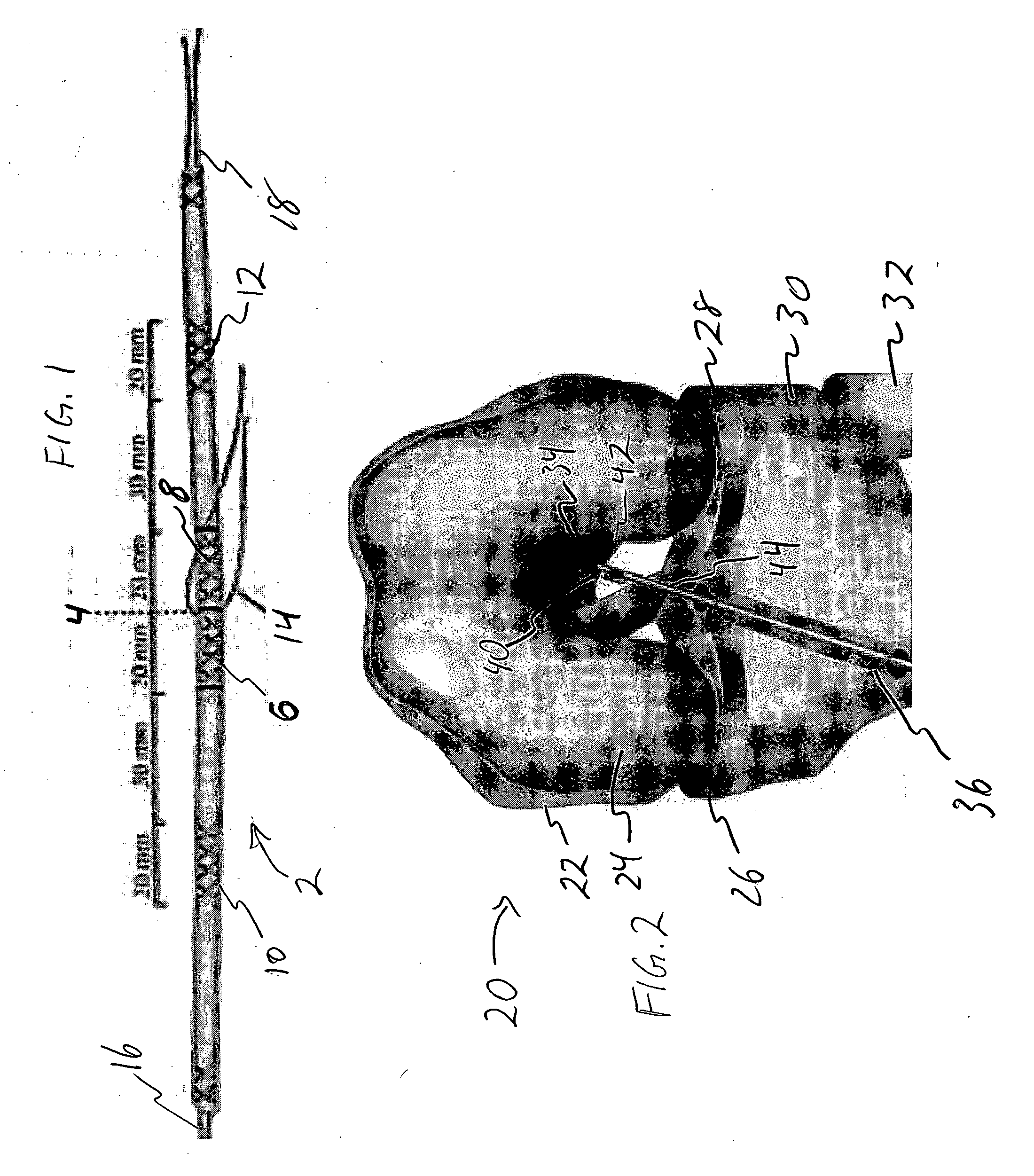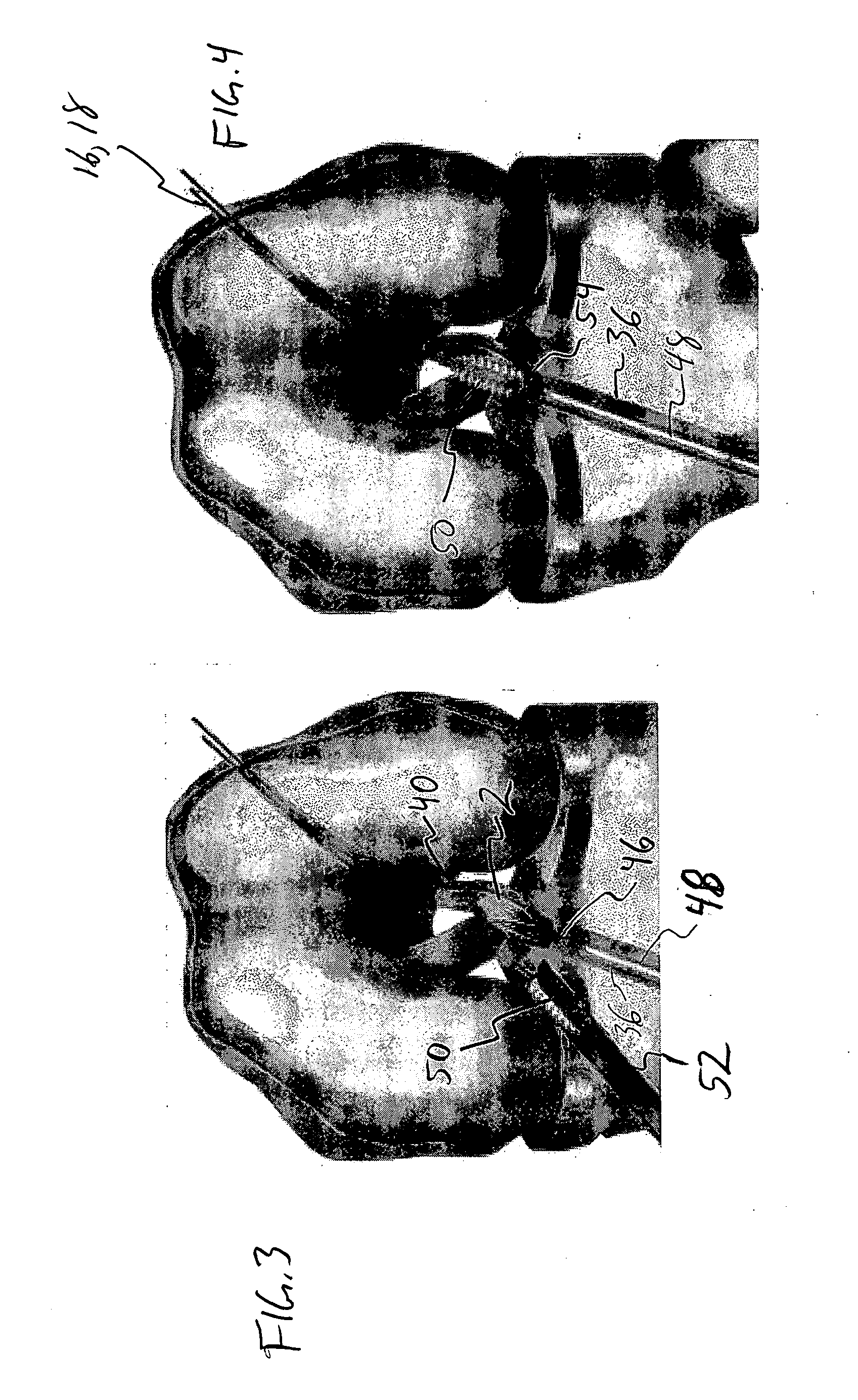Method for creating a double bundle ligament orientation in a single bone tunnel during knee ligament reconstruction
a double bundle and knee ligament technology, applied in the field of cruciate ligament reconstruction, can solve the problems of adding to the complexity and cost of the procedure, and achieve the effects of increasing the fixation strength of femoral and tibial grafts, reducing tunnel widening, and maximizing graft stiffness
- Summary
- Abstract
- Description
- Claims
- Application Information
AI Technical Summary
Benefits of technology
Problems solved by technology
Method used
Image
Examples
Embodiment Construction
[0028] An exemplary method of anterior cruciate ligament (ACL) reconstruction in a human knee according to the present invention is described below in conjunction with FIGS. 1-12. The teachings, methods, and techniques presented can be applied as well to other surgical applications, including without limitation posterior cruciate ligament (PCL) reconstruction in the human knee, for example, as well as reconstructions of other ligaments and joints in humans and skeletal creatures. Adaptations and adjustments to the exemplary technique of human ACL reconstruction described undoubtedly will be necessary in the other surgical applications. They will be well within the skill of the practitioner capable of understanding and undertaking the present teachings and techniques, however, and readily accomplished without undue experimentation.
[0029] Referring initially to FIG. 1, a double hamstring autograft or tibialis tendon allograft 2 of a minimum length of 140 mm is preferred for the doubl...
PUM
 Login to View More
Login to View More Abstract
Description
Claims
Application Information
 Login to View More
Login to View More - R&D
- Intellectual Property
- Life Sciences
- Materials
- Tech Scout
- Unparalleled Data Quality
- Higher Quality Content
- 60% Fewer Hallucinations
Browse by: Latest US Patents, China's latest patents, Technical Efficacy Thesaurus, Application Domain, Technology Topic, Popular Technical Reports.
© 2025 PatSnap. All rights reserved.Legal|Privacy policy|Modern Slavery Act Transparency Statement|Sitemap|About US| Contact US: help@patsnap.com



